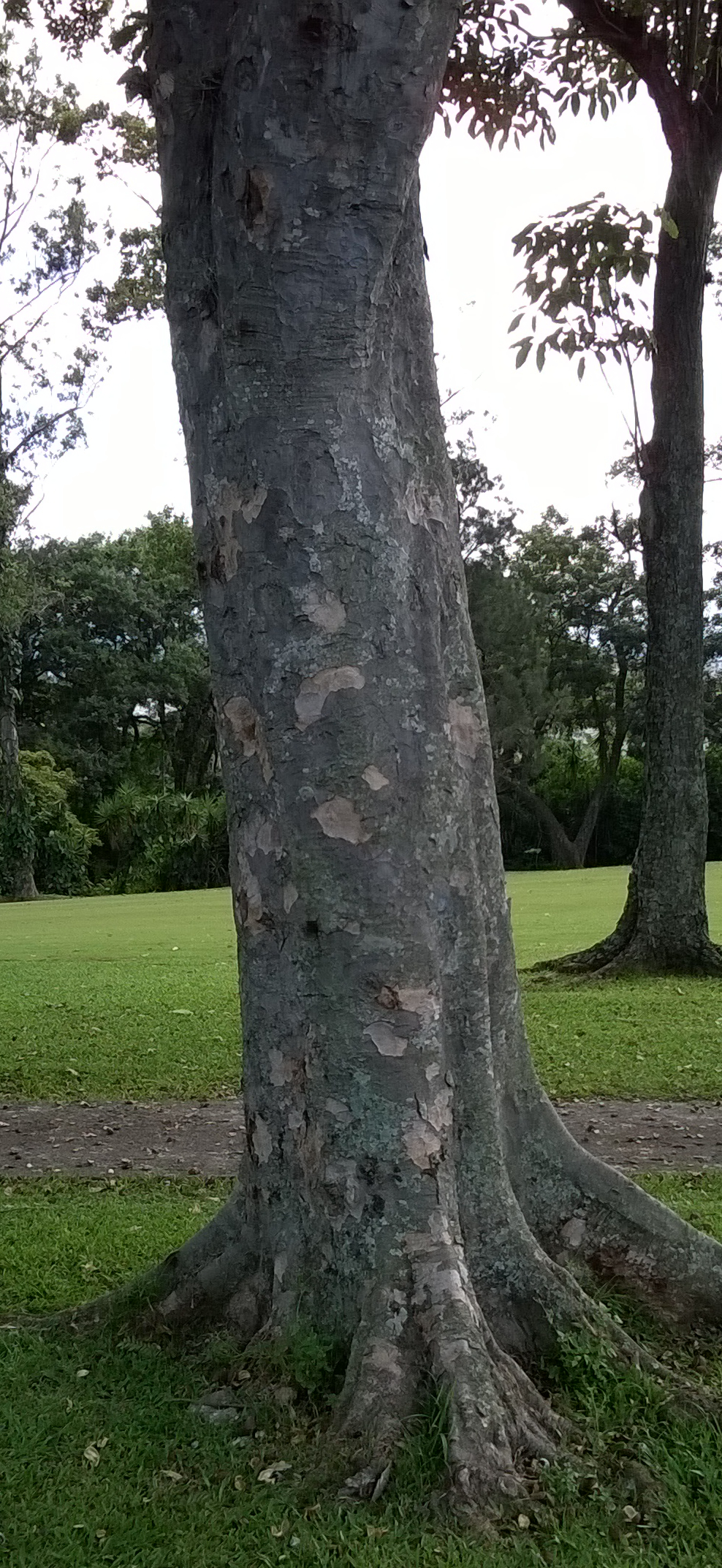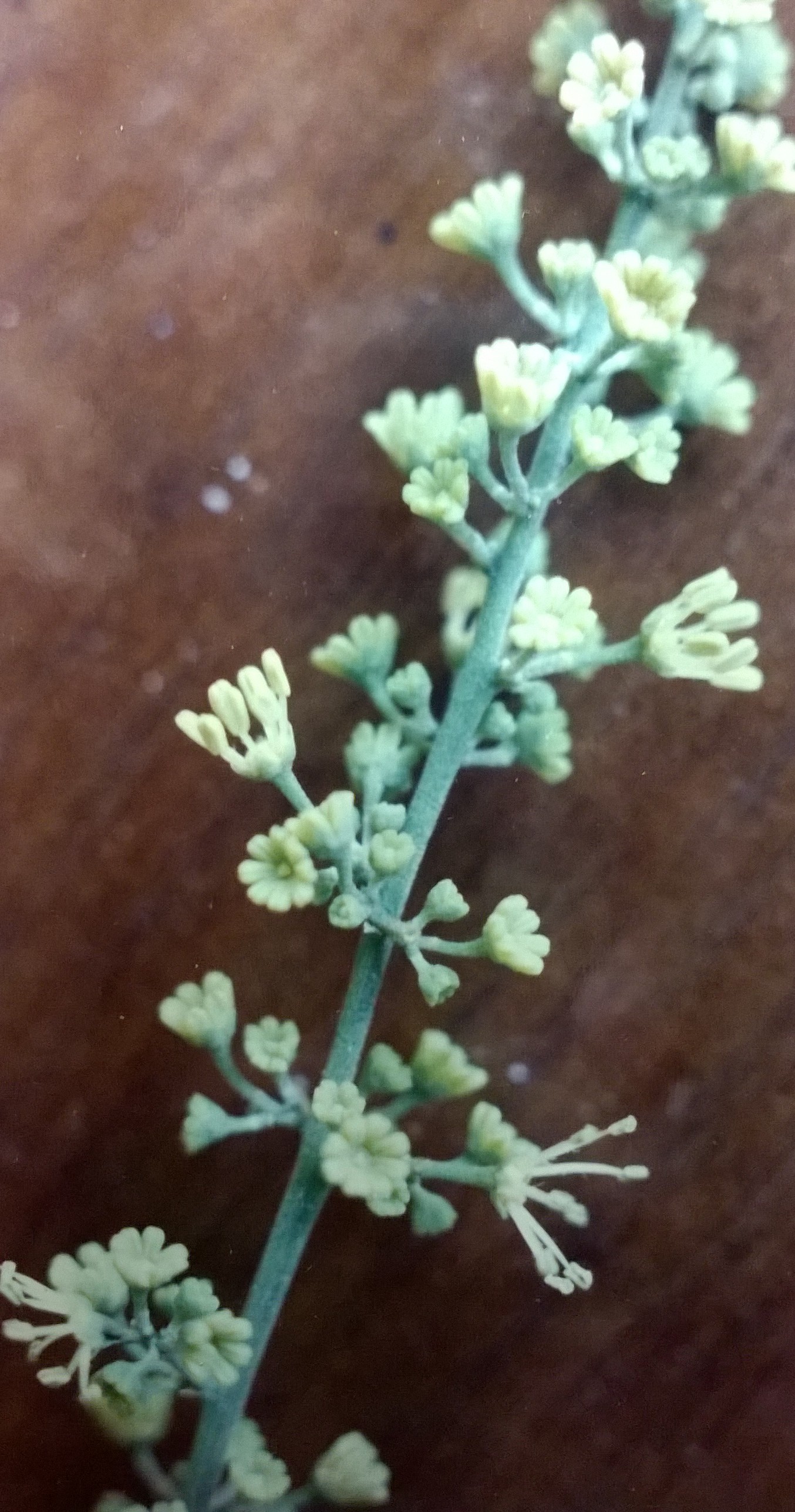Dilodendron costaricense (Radlk.) A. H. Gentry & Steyerm.
Sapindaceae IGUANO
Occasional evergreen canopy tree (20-25 m) found widely but thinly scattered throughout the Pacific Slope’s primary forests. Unique foliage, large, three-part fruits, and seeds with fleshy arils serve to make Iguano a distinctive component of the region’s arboreal vegetation. Of limited distribution, the native range of this tree includes only Costa Rica and Panama.
Description: Iguano boasts a straight, columnar trunk lacking buttresses. Its bark is ashen gray in color and mostly smooth, though exfoliation (in irregular plates) may leave it textured with shallow, whitish pockmarks. Branches make an acute, upward angle with the trunk and they, together with the foliage, produce a narrow, feathery crown of moderate density. Fernlike, Iguano leaves are alternate and bipinnately compound, measuring 30 cm by 20 cm. Their lance-shaped leaflets have unequal bases and they differ from those of most bipinnate species in two important respects: they are relatively large (2.5 cm by 0.8 cm) and they have serrate margins. Iguano leaves bear up to six pairs of oppositely arranged pinna, themselves supporting 18 or so alternate leaflets each. Foliage senesces and falls to the ground in February, leaving the trees bare for two or three weeks. Fresh, light-green, and feathery foliage returns to the branches soon thereafter and the crowns are complete again by April.
Flower production is concurrent with leaf renewal. Blossoms are borne on long (15 cm) racemes that are attached to the branches at the sites of the old leaf axils – just behind the region of surging leaf growth. Arranged in discreet clumps along the raceme, the petal-less, yellow-green blossoms are barely noticeable. Indeed, their small size, unremarkable color and position high in the canopy ensure their anonymity. Nevertheless, what the flowers lack in visual appeal is offset by an intriguing level of developmental complexity. Initially, each blossom consists of a 3 mm, lobed cup supported by a minute, five-pointed calyx – the lobes being formed by eight, erect, sessile anthers that seem to mimic the role of petals at this time. Inside, a short, central pistil with a three-part stigma awaits pollination. Later, the anthers are forced away from the flower as the filaments that support them suddenly appear and lengthen. Finally reaching a length of 8 mm, the fat, club-like anthers dry and burst, releasing their pollen into the air. Flowering occurs annually, in late March and April.
Almost immediately, fruits begin to grow and can be observed dangling from the same racemes. Destined for slow maturation, they will remain in canopy for a solid year before ripening. Each fruit (4 cm) is a globose (or strawberry-shaped), three-part, brown capsule. Arranged in small clusters, they hang vertically from the now-woody, twig-like panicles. While still in the tree, the capsules open as their leathery covering dries and splits along pre-existing seams. Three translucent, colorless, and fleshy arils are then exposed, each covering a maroon, wedge-shaped seed (2 cm by 1 cm). Marked by a white scar at one end, the seeds possess a thin coat that barely conceals a fragile, green embryo within. Harvests last from about mid-March through early May. Seed germination is immediate, with seedlings already well established by late June.
Similar Species: Iguano’s unusual foliage make it a unique and easily identifiable species. Most trees with bipinnately compound leaves belong to the Mimosaceae family, and almost all of these have tiny, entire, and rectangular (or parallelogram-shaped) leaflets. The large, lance-shaped, and serrate leaflets of the Iguano tree stand in marked contrast to these and are not seen anywhere else in the tropical forest.
Natural History: Drab and unobtrusive, Iguano flowers appear to be wind pollinated – though insects may play a role as well. By temporally staggering the maturation of male and female floral components, these blossoms manage to avoid self-pollination. Fruits are eaten and seeds dispersed by arboreal mammals and large birds. Seed dispersal in Iguano appears to be quite effective, for seedlings are regularly found growing in many, widely scattered forest locations – often quite distant from any fertile Iguano trees. The seeds themselves are fragile and not equipped for dormancy, thus their harvest coincides with the beginning of the long rainy season, when growing conditions are ideal.
Uses: The wood of this species is reported to be pink to brownish, strong, moderately dense, and easy to work (Allen, 1956). Iguano has also been employed as an ornamental tree, where it’s aesthetically full and finely textured crown is held in high regard.
Distribution: Iguano is found throughout the primary forest, albeit in small numbers. In Costa Rica, it is observed all along the Pacific coast – from dry Guanacaste (Santa Rosa) to the wet Zona Sur. The species is endemic to Costa Rica and Panama.



